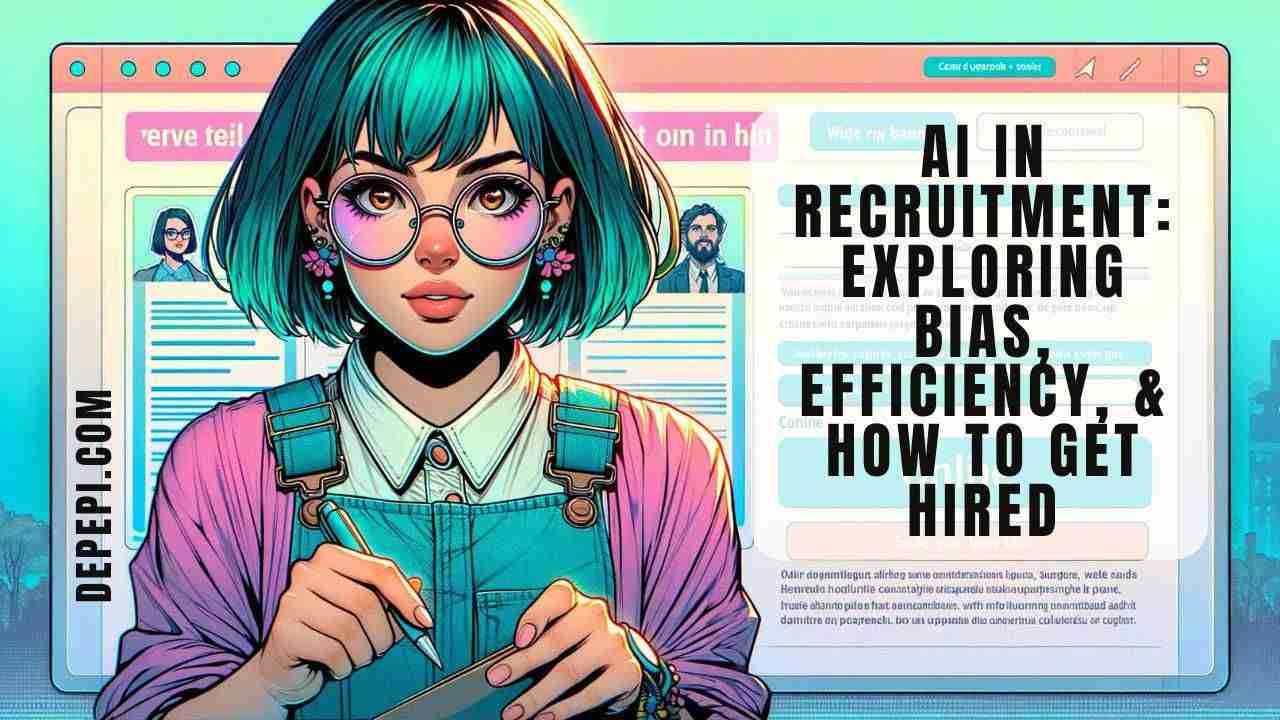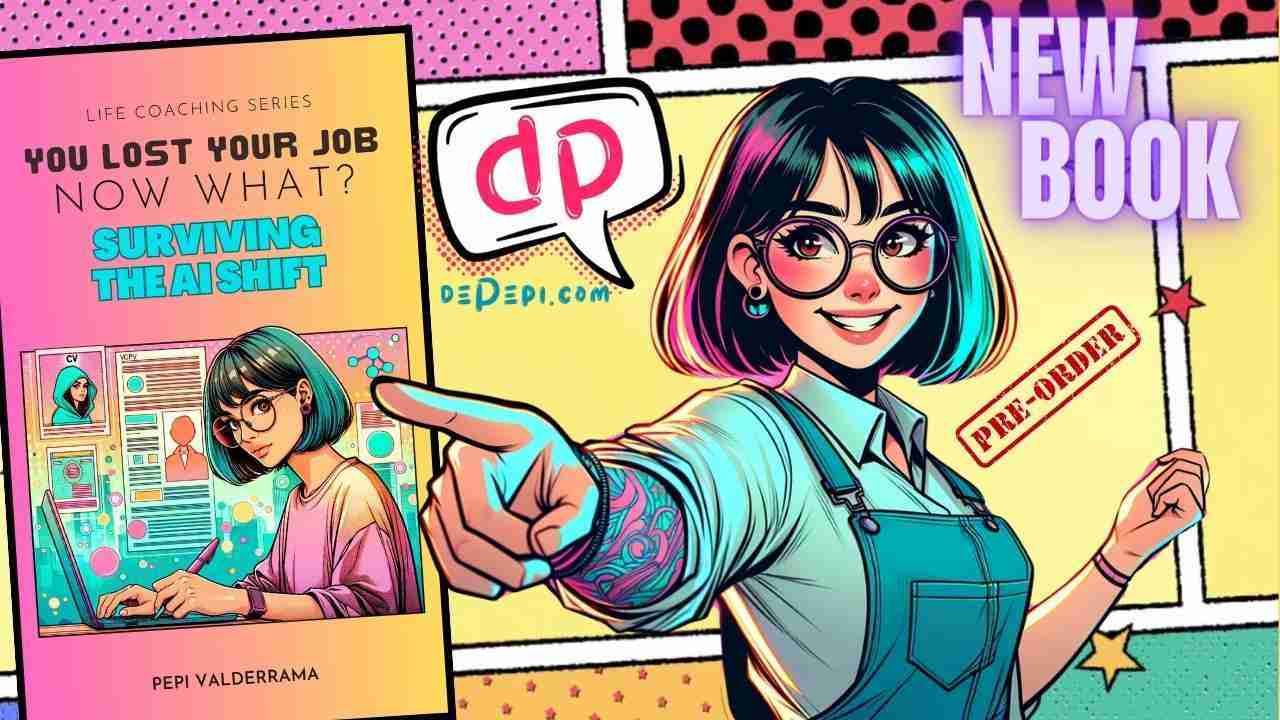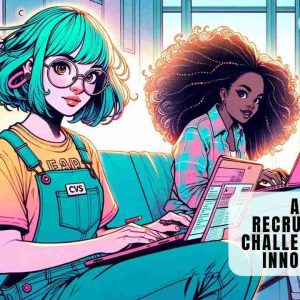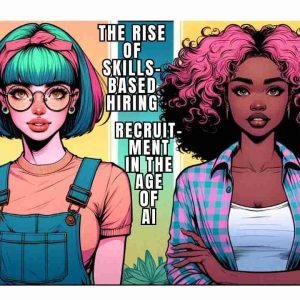AI in Recruitment: Exploring Bias, Efficiency, & How to Get Hired

AI in recruitment presents a new frontier for hiring managers and candidates alike. Tools like OpenAI’s GPT offer promising advancements in recruitment, potentially making recruiters’ tasks more efficient. However, the use of AI raises significant concerns, particularly regarding biases that may arise from these systems. Fret not; you can also use AI to your advantage as a candidate!
AI in Recruitment: A Mixed Blessing
AI’s application in recruitment processes has been seen as a boon to recruiters overwhelmed with the volume of applications. Tools like GPT and Applicant Tracking Systems (ATS) can assist in screening and ranking candidates. Some AI can even conduct initial interviews. This can significantly cut down the time spent on routine tasks, enabling recruiters to focus on more nuanced aspects of the hiring process.
However, the reliance on AI exposes the underlying biases present within these systems. Studies and experiments have shown that AI can perpetuate existing biases, leading to discrimination associated with certain demographics. This issue stems from the AI models’ training data—if the underlying data contains biases, the AI’s decisions will reflect them. This becomes problematic when AI tools systematically favor certain groups over others, potentially sidelining qualified candidates based on biased criteria.
The Role of Generative AI in Fair Hiring
The idea behind using generative AI like GPT in recruitment is to create a more efficient, objective hiring process. In theory, AI can analyze vast amounts of data more impartially than humans. However, the practice reveals a different story – AI systems can and do develop biases, significantly impacting hiring fairness.
For instance, Bloomberg’s analysis highlighted how names distinct to certain races were less likely to be ranked as top candidates by GPT, particularly for roles like financial analysts and software engineers. This reveals a stark reality: AI can exacerbate workplace inequalities without proper checks and balances.
Addressing AI’s Biases
Companies must adopt a more nuanced approach to using AI in hiring to counteract these biases. This includes regularly auditing AI tools for biased outcomes, stripping identifying information like names from resumes before AI evaluation, and ensuring diverse training data. Moreover, there must be a balance between AI-driven processes and human judgment, especially in making final hiring decisions.
Companies should also be transparent about their use of AI in recruitment, allowing candidates to understand how their applications are evaluated. Additionally, there’s a pressing need for regulatory frameworks to guide the ethical use of AI in recruitment, ensuring fairness and preventing discrimination.
The Future of AI in Recruitment
The future of AI in recruitment is not all bleak. If harnessed correctly, AI can significantly improve the recruitment process, making it more efficient and potentially fairer by mitigating human biases. However, this requires a commitment from businesses to prioritize ethical AI use, continuously monitor for biases, and incorporate human oversight.
Make Sure You Have a Fighting Chance With This Book!
Pre-order “You Lost Your Job. Now What? Surviving the AI Shift” and bulletproof your resume before applying. It offers a comprehensive guide to learning prompting and practical advice on enhancing your resume to ensure your competitiveness in the job market while offering a cool guide on how to prepare for those AI interviews. (Out: March 21st, 2024)
What’s Inside:
- Resilience Over Regret: Job gone and emotions all over the place? You’re not alone. This book will propel you from despair to determination, turning setbacks into setups for your next big opportunity.
- Your Comeback Plan: Ditch the downtime and implement a detailed plan to transition from the shock of unemployment to being the candidate every company wants to hire.
- AI is Your New BFF: Need a standout résumé? Want to nail your interviews? Need help with cover letters? Learn how to make this AI your career coach using well-crafted prompts. You’ll also find a collection of sources and prompts to help you start straight away.
- Master the Art of Prompting: The job market is evolving, and clinging to the past won’t help. This book is your roadmap to learning prompting and adding the skill to your résumé.
- Don’t Put All Your Eggs in One Basket: Redundancy Round Two? Spread your risk by diversifying your income streams, skills, and life plans.
- Real Talk from Real People: You’ll not find fairy tales here. Instead, you’ll read real stories from people who have survived layoffs and other hardships.
This book’s contents will help you have a strong ATS resume, add prompting as a skill, and practice for interviews using AI. Can’t wait? Get Enhance Your Resume With AI—The Guide now. It’s packed with prompting techniques and examples, best practices, and more!






